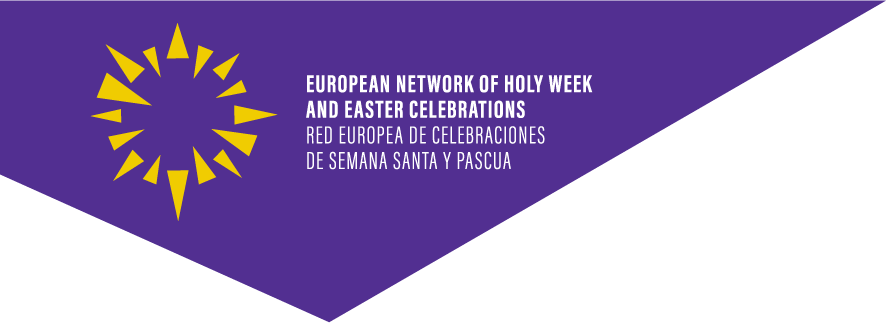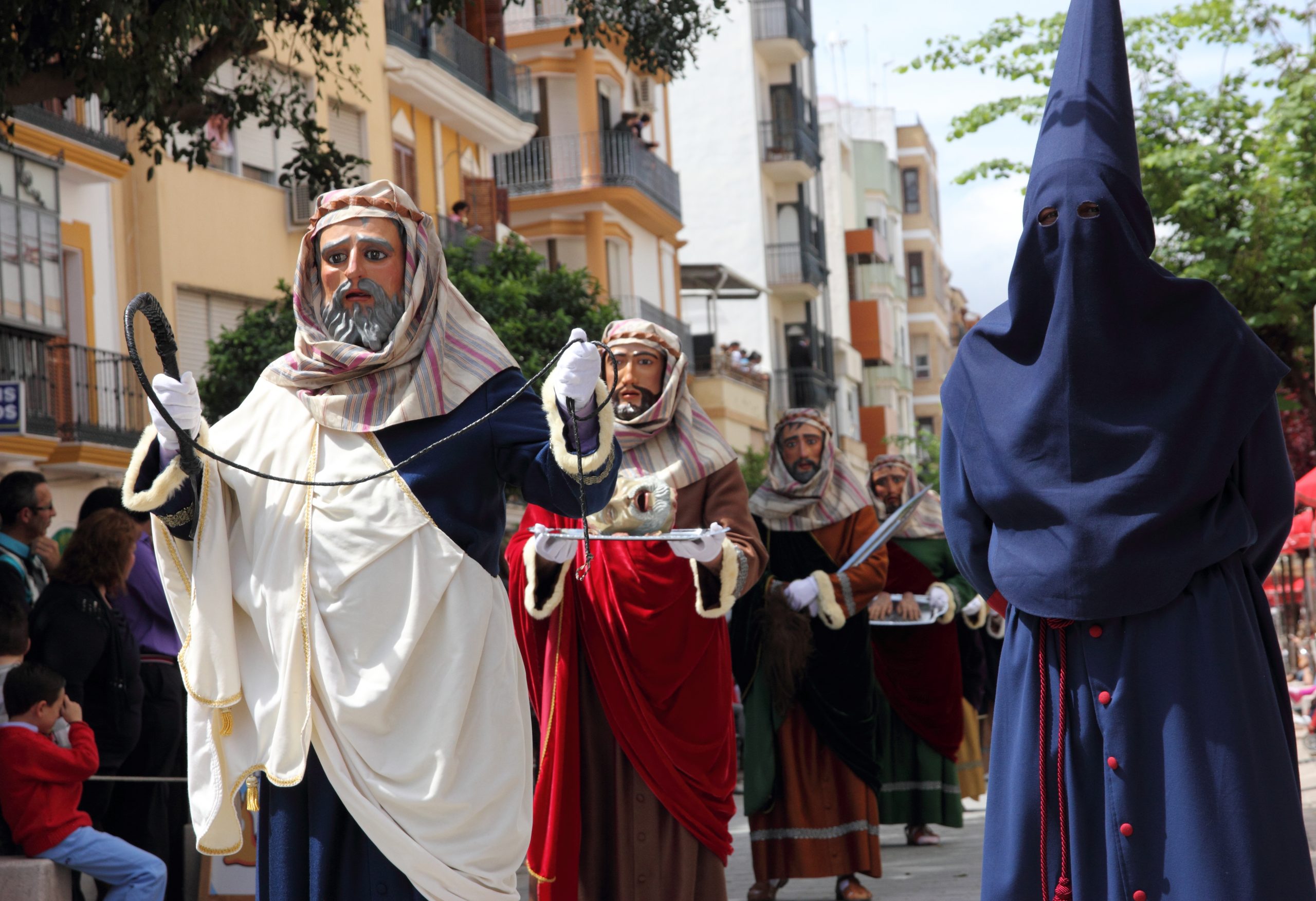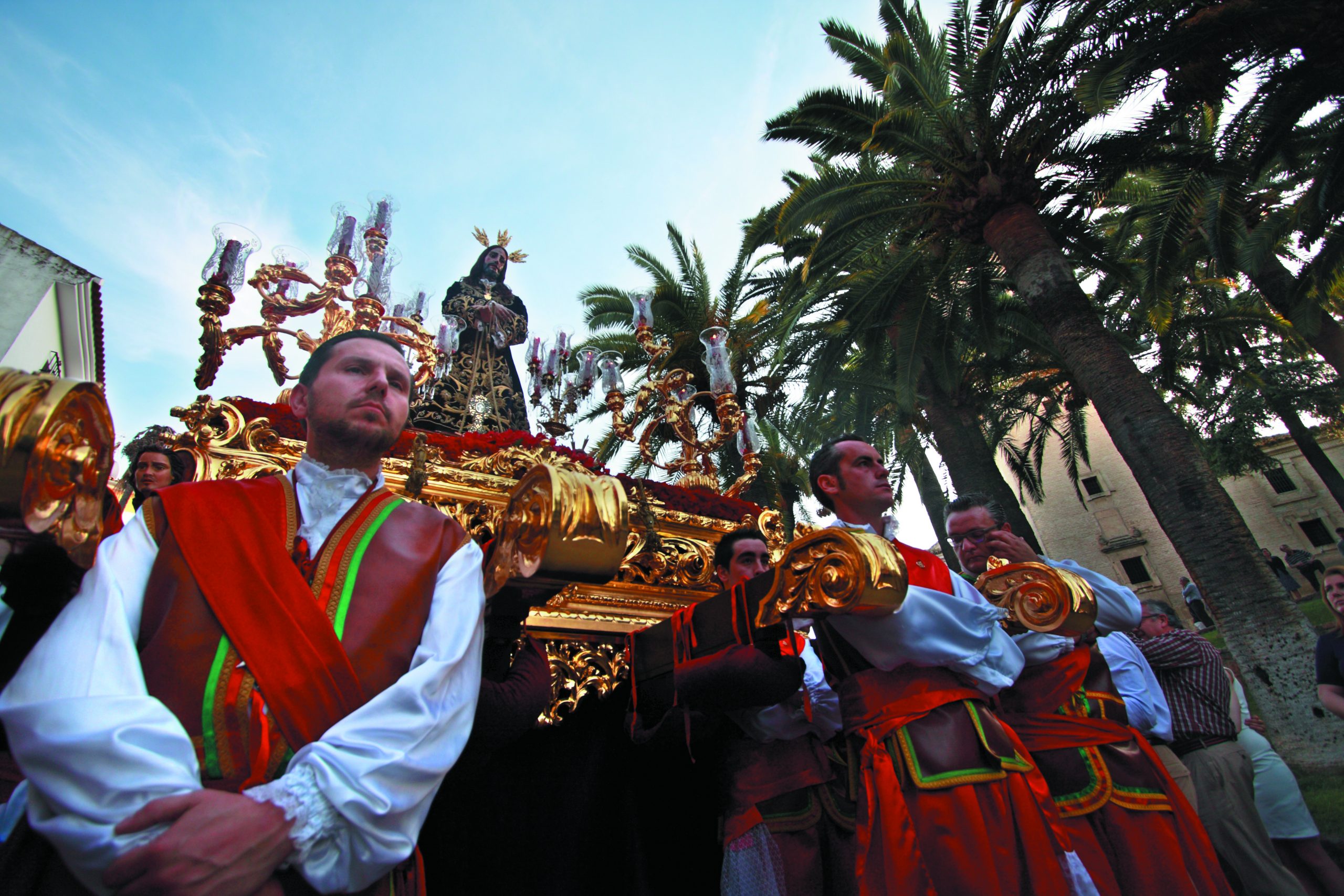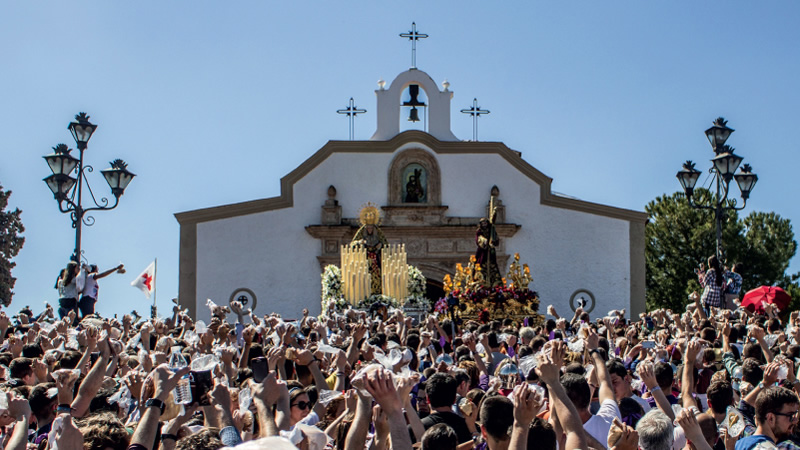
Holy Week in Priego is characterized by the solemnity and religious fervor with which it is carried out. The different brotherhoods carry out their penance stations with impeccable preparation and great uniformity in which every detail is taken care of with tenacity. Silence and devotion reign among the penitents of Priego as a manifestation of an intimate feeling that is only broken in the encounter with the Nazareno, where the passions of the community explode.
Thus, once fasted in Lent with the numerous dishes that the local cookbook keeps for the date, the quejío of the saetas erupts and, with them, the first day of processions in which the younger brotherhoods perform penance station, the Entrada in Jerusalén and the Brotherhood of Paz. The same happens on Monday with the Buena Muerte, whose Christiferous figure, a crucified person, processions through the streets of the municipality without a stretcher and surrounded by hand axes. It is followed, on Tuesday, by the Brotherhood of the Expiración, whose penitents accompany the Cristo de la Expiración and the Virgen de los Desamparados on their tortuous journey. But perhaps, for the outsider, the most striking thing is the representation of the arrest that the Brotherhood of the Columna carried out in the Plaza de la Constitución after the walk of the figures who intervened in the act. After which he prepares to process the procession of Jesús Preso.
From an altar and a museum on the street, it can be called the departure of the Vera Cruz and Jesús en la Columna on Holy Thursday, a beautiful carving by Alonso de Mena. And that morning the parade of the Buena Muerte can be seen again. The celebration finds a point of contrast with the popular explosion of the ritual that is celebrated on Friday around the Nazareno, which unleashes the passions in the act known as the blessing of the hornazos. In the afternoon, Holy Week comes to an end with the parade of Angustias, along with the solemnity of the urn of the Santo Entierro. To arrive at Easter with the joy of seeing the Virgen de la Cabeza show off her finery with the Resucitado.
 Contrast of ages
Contrast of ages
Past and present coexist in the celebration of Holy Week in Priego de Córdoba. Renaissance and baroque carvings coexist with classical and neo. And we can glimpse three historical periods in which this tradition has had its peak. With the end of the Council of Trent, the first corporations originated, namely Columna (1550), Jesús Nazareno (1593) and Santo Entierro (1594). In the middle of the Baroque, new entities emerged in the city that magnify the party, the Resucitado and Caridad. But it is in recent times where the largest number of corporations are concentrated, which suggests the good health of this tradition.
The Pestíñez and the Bacalao
At dawn on Good Friday, a small group made up of the Pestíñez and the Bacalao walk the streets of Priego announcing with their sounds the great day that is to come, a rite of which there is evidence, at least, since 1602. The Pestíñez wears with albero jacket, ankle pants, high boots and headpiece without feathers, and is in charge of keeping the rhythm with the drum. The Bacalao is also dressed in a similar way and sounds its trumpet with a great roar.
Prendimiento
The exact origin of this act is unknown but in the first constitutions of the Archconfraternity of Vera Cruz, of 1674, the way in which it is developed is already established. It is a representation of sacred theater that represents the Last Supper of Jesus, the Prayer in the Garden and the Arrest. Until the mid-fifties of the last century the characters of the apostolate and Jesus were represented by priests, although currently only the central figure of Christ maintains that tradition. In the act the executioners intervene, Jews in charge of carrying out the arrest of Christ, who cover his face with masks that represent the wickedness and perversion of men.
Blessing of the hornazos
On Good Friday morning the air smells differently, it is said that everyone is a Nazareno that day in Priego de Córdoba. At eleven o’clock in the morning, the crowd huddles to the beat of San Francisco, waiting to see the image of Jesús Nazareno appear. The passage of Jesus, always surrounded by a crowd, continues his itinerary until he reaches Palenque where, at the cry of “paso redoblao”, he takes the light step that will take him to Calvary. Once there, the crowd waits expectantly, together with the Virgin, for the blessing of the hornazos. It is the climax of Holy Week in Priego.
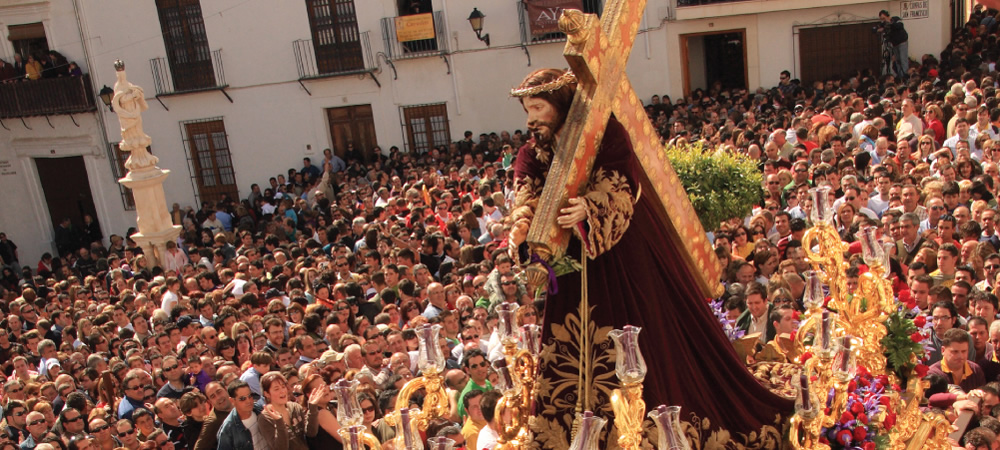 All year
All year
The prieguenses brotherhoods proudly display their titular images during the month of May in the votive festivals on Sundays in May, exhibited in splendid altarpieces and with great ornamental profusion. The town holds different religious celebrations throughout the year and one of the most unique is a secular tradition whereby the Hermanos de la Aurora pray the rosary singing every Saturday night. Likewise, Corpus Christi and the Romería of the Virgen de la Cabeza, on the third Sunday of June, are two very special festivities for the people of Priego.
